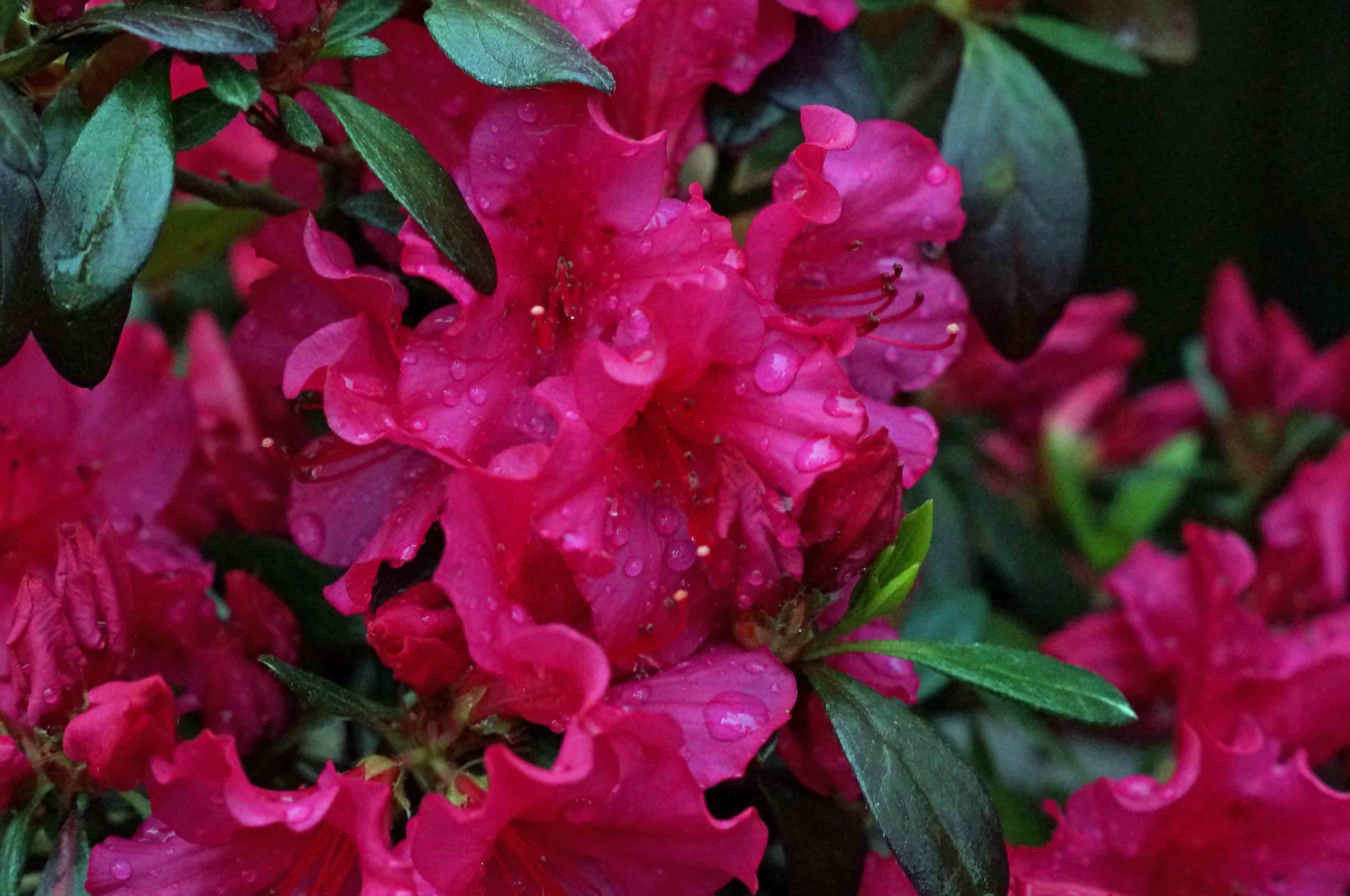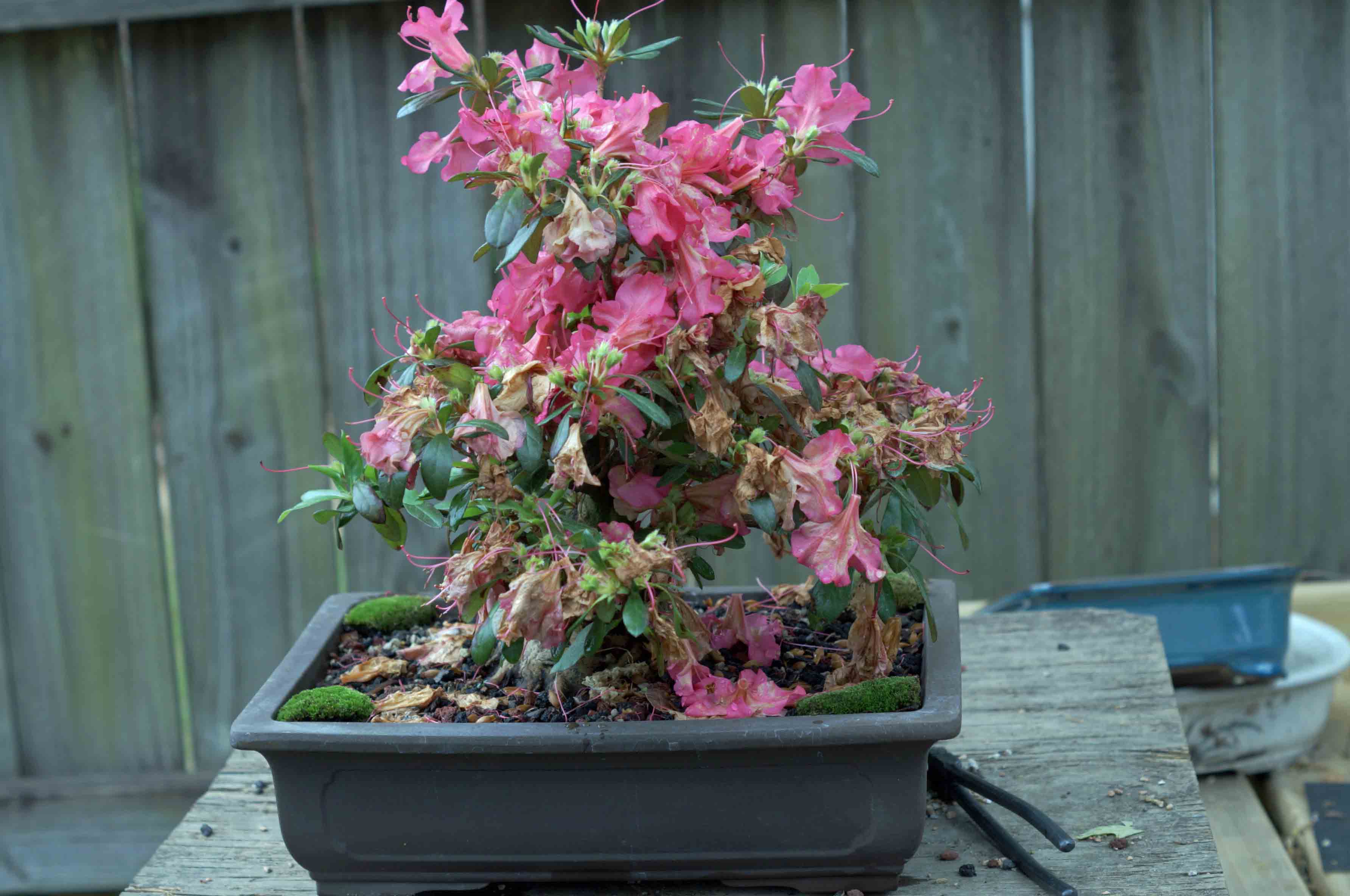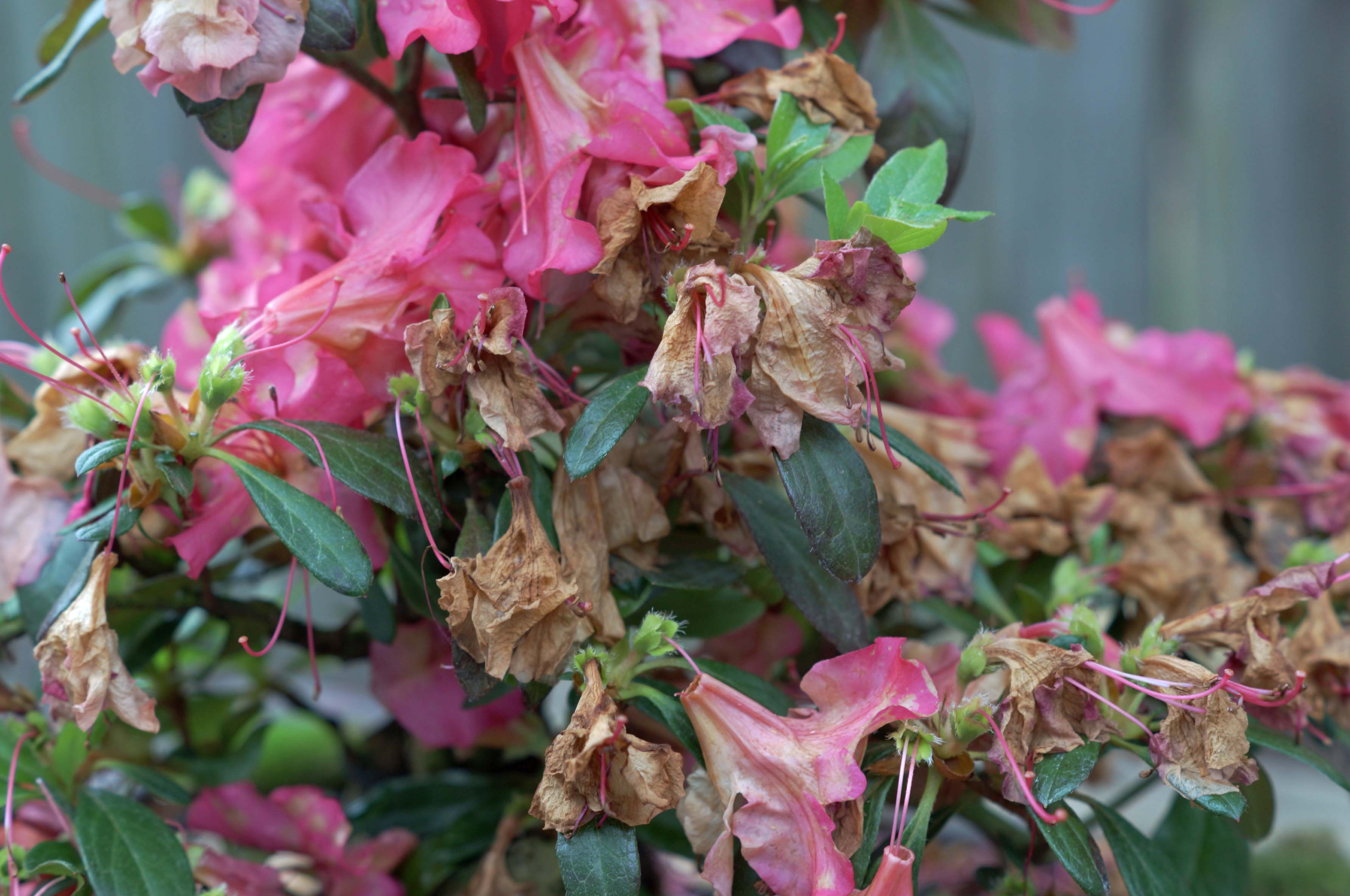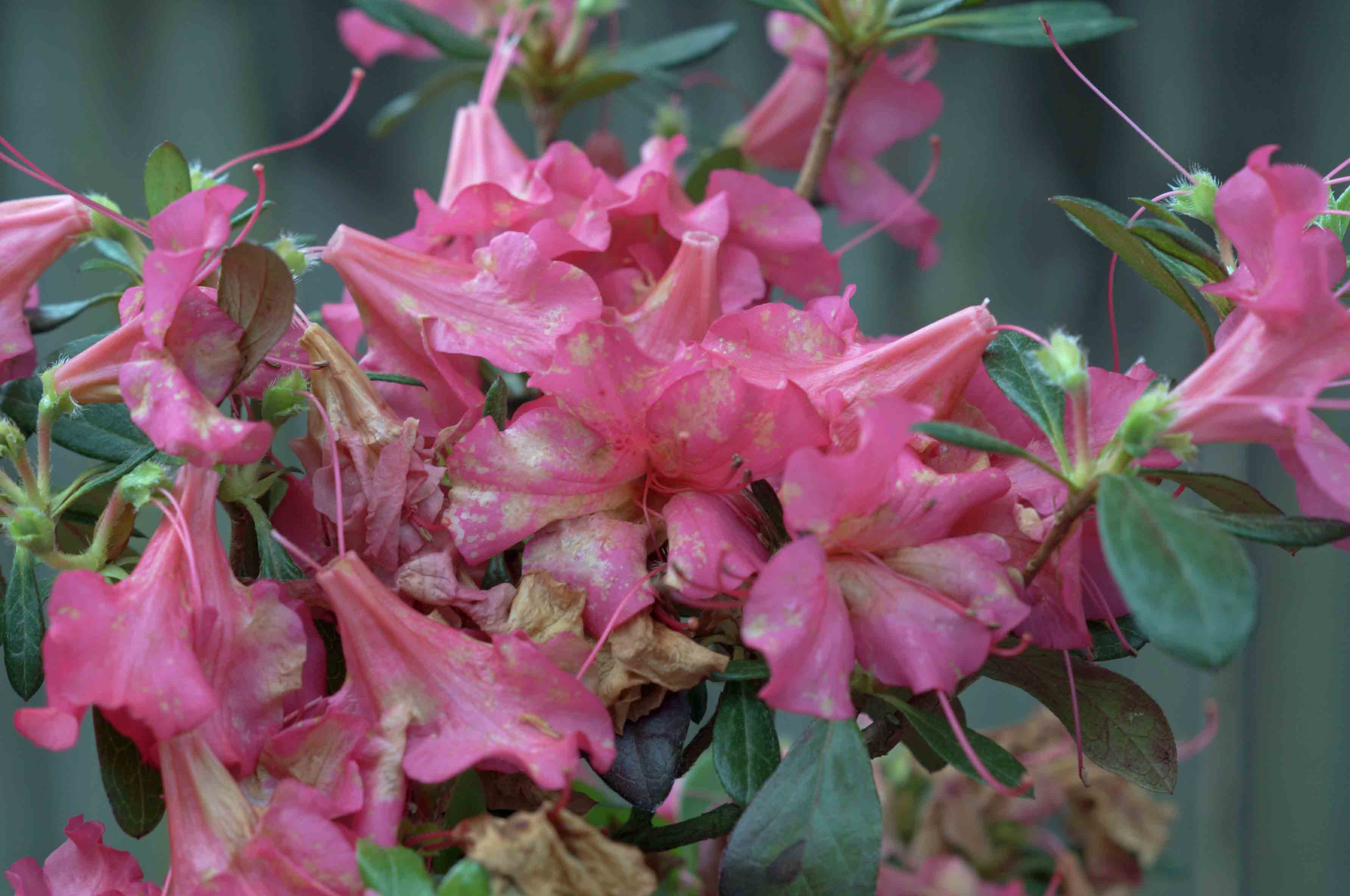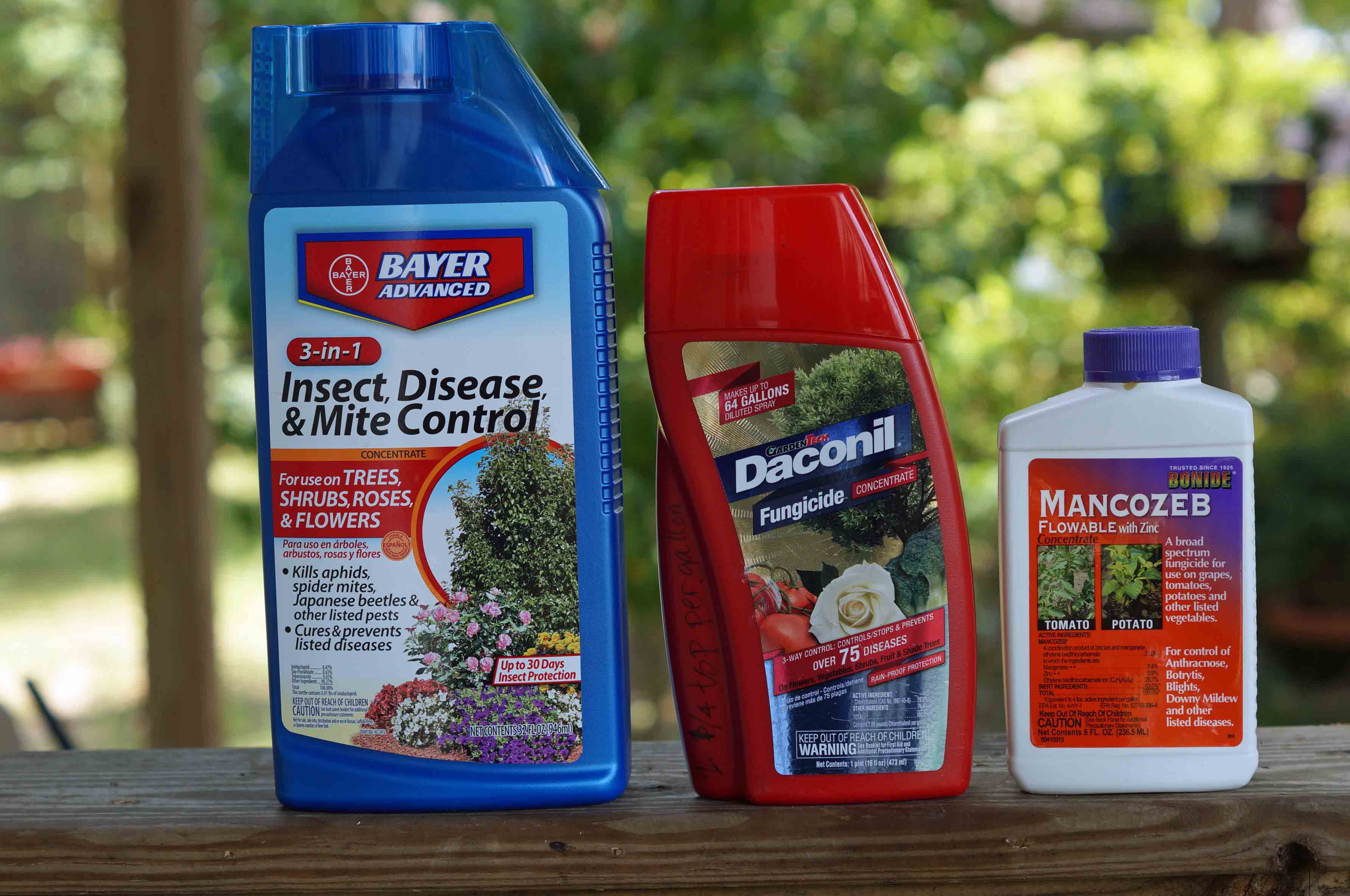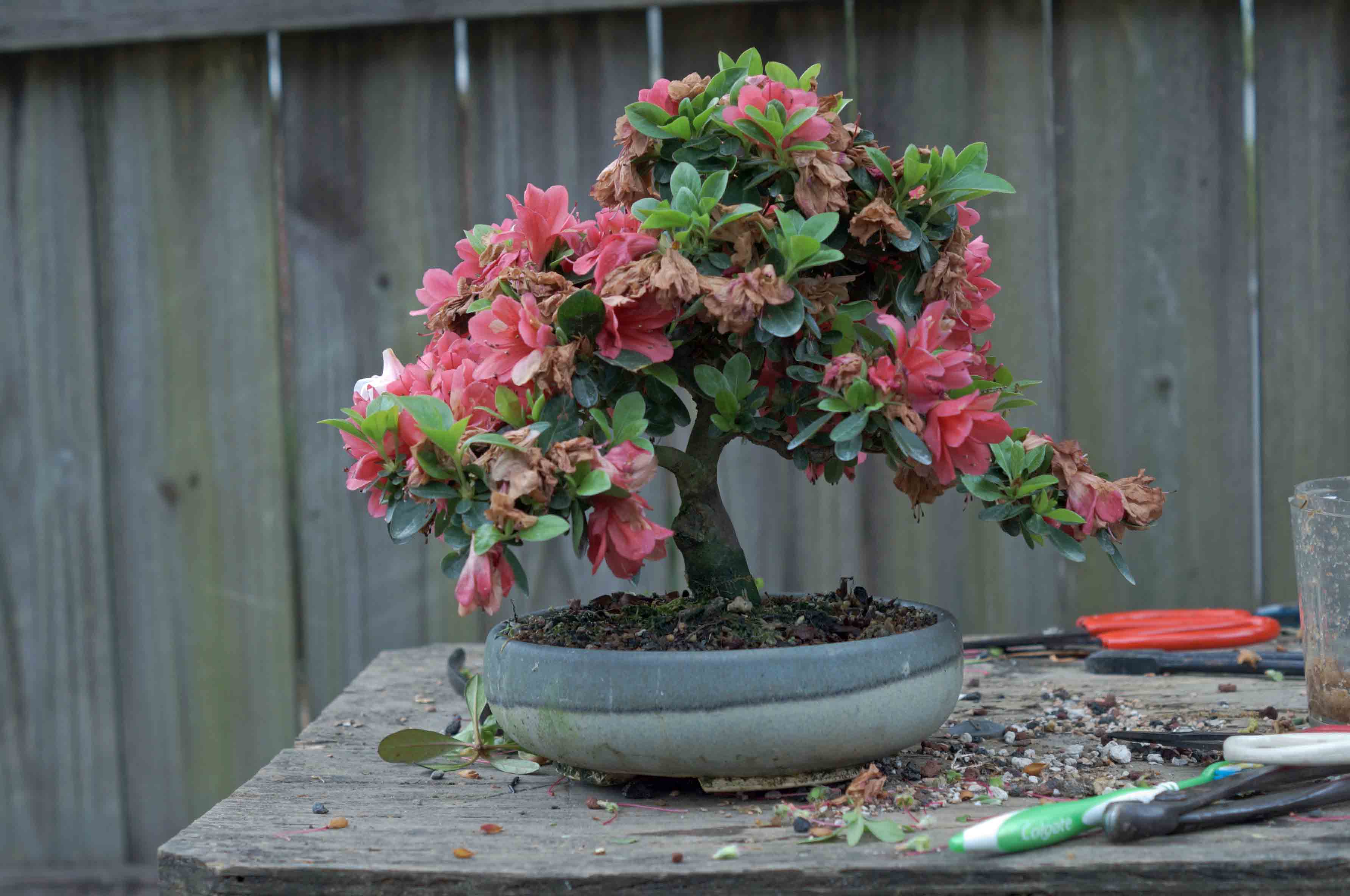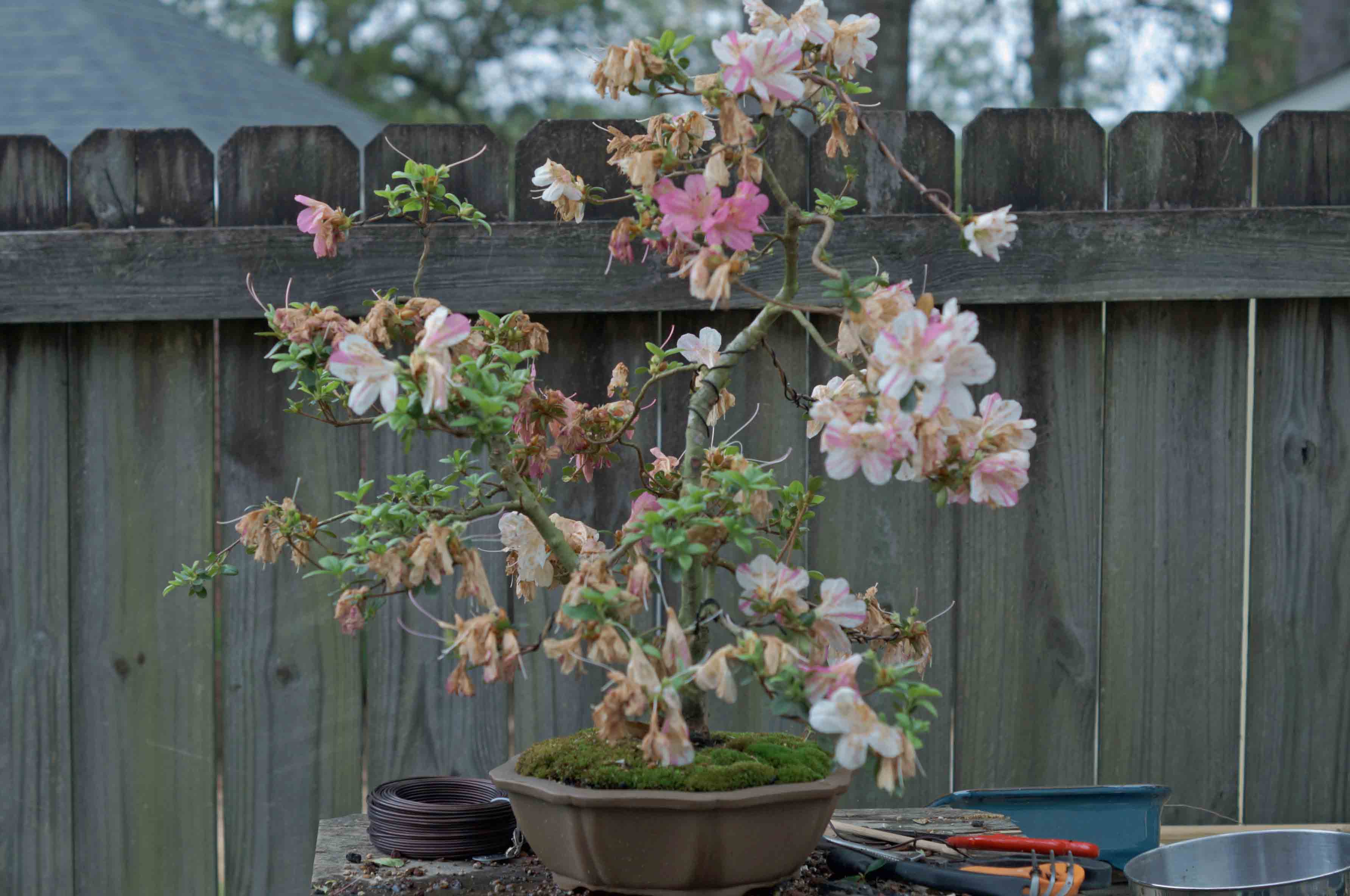You may have experienced it, I know that I have. One day you are outside admiring your azalea bonsai’s beautiful blooms, the next day you check them and they have all turned to jelly and are hanging off the plant like some type of slime. What Happened? I have been robbed of what I have been waiting all year for! As an example, here is one of my azaleas, it is called Girard’s Rose, this is what it looked like on March 11:
Several days later (the flowers actually started showing signs the next day) it looked like this, a hot mess and a shame, the flowers are a nice shade of bright pink:
This is what happens when a fungus known as ovulinia azalea, or petal blight, infects your azalea’s flowers. Once it strikes, there is nothing you can do except pluck them off.
What is petal blight? It is a fungus that was first noticed in South Carolina in 1931 and soon spread across the country. Ovulinia only infects the blossoms on the plants. It first presents itself as small spots on the flowers about the size of a pin head. The spots are pale or whiteish on colored flowers and brown on white flowers. They are round at first but quickly enlarge and affect the whole petal and then the entire flower. Eventually the flower collapses into a slimy ooze.
The infected flowers frequently cling to the twigs for quite some time, dry, and turn brown, creating an unsightly mess. If left they will eventually fall to the ground. While they are hanging, hard black objects form on them. These are called sclerotia and is a “capsule” that allows the fungus to survive until next years flowers are available. The sclerotia eventually fall to the ground with the dead flowers.
When the next season arrives (usually in the Spring), the sclerotia produce small, brown, saucer-like structures called apothecia on stalks, think mushroom, only they are only 1/6 inch in diameter and the stalks are about 2/5 of and inch tall. The initial infection of the flower occurs when the apothecia shoots spores into air and they make contact with the flower. Secondary infections occur by means of spores produced by the fungus on infected petals. These spores are transported by rain splash, wind, watering of the plant, and pollinating insects.
Ovulinia prefers cool wet morning, around 50-70 degrees, especially when there is a fog. These conditions perfectly describe most of our spring mornings in the Heart of Dixie.
Can it be prevented? Yes, to some extent. It is suggested that all of the infected flowers be removed and bagged or burned. This is not entirely feasible, easy enough for your bonsai, but not so much if you have azaleas growing in your yard, along with your neighbors. Hey, it’s the Heart of Dixie, you aren’t southern it you don’t have azaleas growing in your yard! It is also recommended that the mulch underneath the azaleas are removed and replaced with fresh, uninfected mulch; or placing four or so inches of new mulch on top of the old. This will help to keep the apothecia form discharging the initial spores into the air. Again, doable, but not really feasible, you might get some of the sclerotia, but not all.
Don’t give up yet, there is another way – use a fungicide. I have found that Mancozeb by Bonide, Daconil by whoever, and Bayer 3 in I insect and disease prevention to be very effective. Timing is everything, you have to spray the plants when the buds start to show color. I usually start spraying mine just as the buds start to swell and then every week until they finish blooming. By doing this, I find that maybe one or two flowers might get infected, but never the whole tree. I rotate between the three products to keep the fungus from building up a resistance to the treatment. While you are at it, hit those maples too, at the same time ovulinia is attacking your azaleas, anthracose will be attacking your maples.
What is petal blight? It is a fungus that was first noticed in South Carolina in 1931 and soon spread across the country. Ovulinia only infects the blossoms on the plants. It first presents itself as small spots on the flowers about the size of a pin head. The spots are pale or whiteish on colored flowers and brown on white flowers. They are round at first but quickly enlarge and affect the whole petal and then the entire flower. Eventually the flower collapses into a slimy ooze.
The infected flowers frequently cling to the twigs for quite some time, dry, and turn brown, creating an unsightly mess. If left they will eventually fall to the ground. While they are hanging, hard black objects form on them. These are called sclerotia and is a “capsule” that allows the fungus to survive until next years flowers are available. The sclerotia eventually fall to the ground with the dead flowers.
When the next season arrives (usually in the Spring), the sclerotia produce small, brown, saucer-like structures called apothecia on stalks, think mushroom, only they are only 1/6 inch in diameter and the stalks are about 2/5 of and inch tall. The initial infection of the flower occurs when the apothecia shoots spores into air and they make contact with the flower. Secondary infections occur by means of spores produced by the fungus on infected petals. These spores are transported by rain splash, wind, watering of the plant, and pollinating insects.
Ovulinia prefers cool wet morning, around 50-70 degrees, especially when there is a fog. These conditions perfectly describe most of our spring mornings in the Heart of Dixie.
Can it be prevented? Yes, to some extent. It is suggested that all of the infected flowers be removed and bagged or burned. This is not entirely feasible, easy enough for your bonsai, but not so much if you have azaleas growing in your yard, along with your neighbors. Hey, it’s the Heart of Dixie, you aren’t southern it you don’t have azaleas growing in your yard! It is also recommended that the mulch underneath the azaleas are removed and replaced with fresh, uninfected mulch; or placing four or so inches of new mulch on top of the old. This will help to keep the apothecia form discharging the initial spores into the air. Again, doable, but not really feasible, you might get some of the sclerotia, but not all.
Don’t give up yet, there is another way – use a fungicide. I have found that Mancozeb by Bonide, Daconil by whoever, and Bayer 3 in I insect and disease prevention to be very effective. Timing is everything, you have to spray the plants when the buds start to show color. I usually start spraying mine just as the buds start to swell and then every week until they finish blooming. By doing this, I find that maybe one or two flowers might get infected, but never the whole tree. I rotate between the three products to keep the fungus from building up a resistance to the treatment. While you are at it, hit those maples too, at the same time ovulinia is attacking your azaleas, anthracose will be attacking your maples.
More Infected Azalea Pictures:




